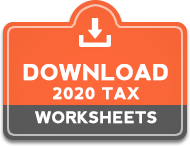
Calgary widow forced to pay $270K to CRA
February 1, 2020
Everything you need to know to file your taxes in 2020
February 25, 2020RRSP
March 2, 2020 is the deadline for contributing to an RRSP for the 2019 tax year.
December 31 of the year you turn 71 years of age is the last day you can contribute to your own RRSP
Which investments can reduce your tax bill?
Taxes may be inescapable, but your choice of investments can have a huge impact on how much tax you pay. It all depends on your personal situation and how you structure your investment portfolio. 3 types of investment income and how they work A basic investment portfolio can generate three types of income:
- Interest income. If you have a savings account or a money market fund, you will receive interest income. Ditto, if you have a fixed income or bond component in your portfolio. A five-year Government of Canada bond, for example, may have a “coupon” of 2.25%, meaning for every $1,000 invested, you will receive $22.50 in interest each year. If your bond component is held in a mutual fund trust, you will receive annual “distributions.”
- Dividend income. If you buy shares in publicly traded companies, you may receive dividends, a company’s way of sharing its profits with its shareholders. You will receive a certain amount per share quarterly, semi-annually or annually. Likewise, you can receive dividend income from a mutual fund that buys dividend-generating stocks and makes an annual distribution to unitholders like you.
- Capital gains or losses. If you sell your company shares, your mutual fund units or a bond you own before its term expires, you may generate a capital gain or loss. For example, if you bought shares in ABC Co. for $10 each and sold them for $20 each, you would have a $10-per-share profit. That is a capital gain. If, on the other hand, you bought at $20 a share and sold at $10, you would have a loss of $10 per share. That is a capital loss.
How your investments are taxed
Each source of investment income is subject to a different tax treatment, but how that affects your overall tax bill depends on where you hold those investments.
Investments in registered accounts
If you hold your investments in a registered account — such as a registered retirement savings plan (RRSP), a registered education savings plan (RESP) or a tax-free savings account (TFSA) — any investment growth inside your account will not be taxed. The tax treatment for your contributions and withdrawals will be different for each account, though. With RRSPs, you get a tax deduction for your contribution. But when you withdraw money, your entire withdrawal will be taxed at your marginal tax rate (the rate of tax you would pay on an additional dollar of taxable income). Because RRSPs were originally conceived as retirement savings vehicles, the expectation is that you will not begin taking money from your account until you retire. Presumably by that time your income will be lower than it was during your working years, and you will be in a lower marginal tax bracket. With RESPs, you don’t get to deduct your plan contributions, so withdrawals of those contributions are not taxed. Withdrawals of any investment growth are taxed, however, but in the hands of the child who uses the money to pay for his or her post-secondary education. That person presumably is in a lower tax bracket than you, and can also use some of those education expenses to further reduce his or her tax bill. TFSAs are the exception. TFSA contributions are not deductible, and withdrawals are not taxed. Any investment income and growth is entirely tax-free.
Investments in non-registered accounts
If investment income goes into a non-registered account, the tax treatment is entirely different. Interest income is 100% taxed. So, if you hold your Government of Canada bond in a non-registered account, that $37.50 in interest will be added to your income in the year it’s earned, and you will pay tax on it at your marginal rate. Dividends from foreign corporations are taxed as ordinary income, just like interest. But dividends from Canadian corporations receive better tax treatment. Because companies pay dividends from their after-tax income, to tax that income again in your hands would be double taxation, something the Income Tax Act (ITA) tries to avoid. Instead, the ITA requires you to “gross up” the amount of dividend income you report by a specified percentage to bring it back to approximately what it would have been before the corporation paid tax on it. Then the tax you pay on that dividend is offset by a tax credit. It sounds complicated, but the end result is that you pay a lower rate of tax on dividend income from Canadian sources than you do on interest income. The most favourable tax treatment goes to capital gains. In the year in which you sell your stock, bond or mutual fund, you are required to include only half of that gain in your income, which is then taxed at your marginal tax rate. To go back to our ABC Co. example: You sold the shares, for which you paid $10 a share, for $20 a share, making a $10 profit. Only 50% of that gain, or $5, is added to your income. That’s one tax advantage for capital gains. Another is that they are under your control to a certain extent. You can decide when you want to sell the asset and take the gain. For example, you could take the gain in a year when you have an offsetting loss, or when you’re taxable income is lower because you were out of work. When you choose to take the gain becomes part of your tax strategy. When mutual fund managers buy and sell investments at the fund level, however, they create capital gains and losses that are allocated to you as one of the unitholders of the mutual fund.
How do these tax differences affect your investment strategy?
They won’t affect your overall asset allocation strategy. You’ll still have the same percentage of your investments in bonds, dividend stocks and equities held to produce capital gains. But you won’t necessarily have identical asset allocations for each account. Instead, you’ll adjust the allocations for each account to take advantage of the varying tax treatment that each investment and account offers, while still maintaining the same overall asset allocation. For example, your registered accounts could own more of the investments that earn heavily taxed interest income, to protect that income from tax. But your non-registered accounts could own more of your investments that produce dividends and capital gains, because those assets already offer some tax sheltering. This is an extremely simplified picture. Anything to do with taxes and investing should be part of a larger plan that takes into account your income needs, your investment time horizon and when you want to withdraw your money. But understanding the tax treatment of the different sources of income is a great basis for a serious discussion with your investment advisor or your accountant.
Article Source: sunlife.ca







